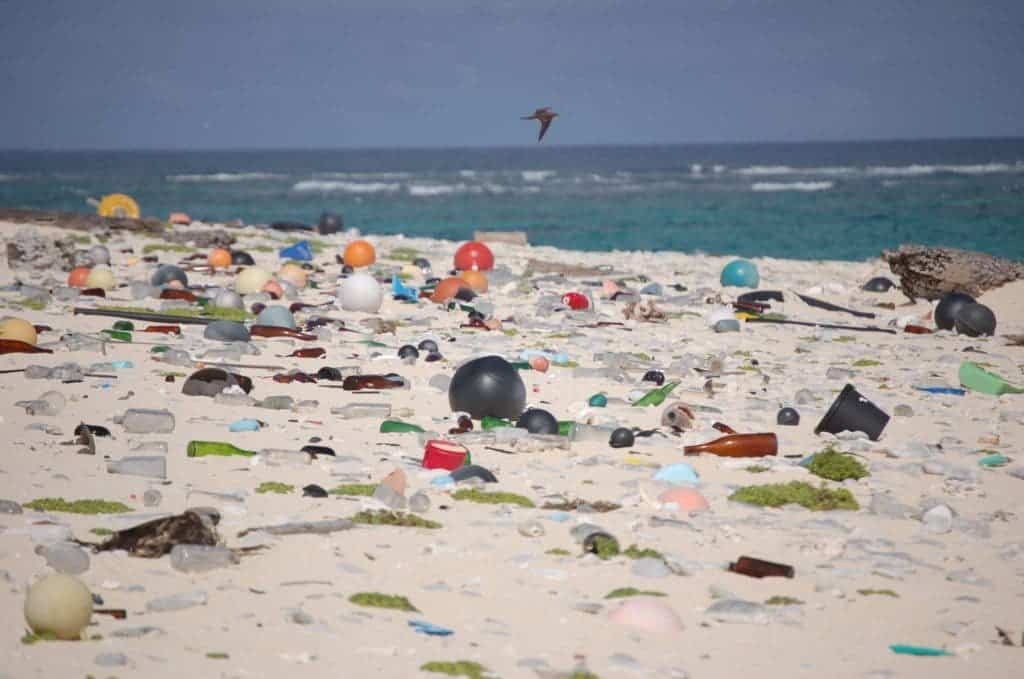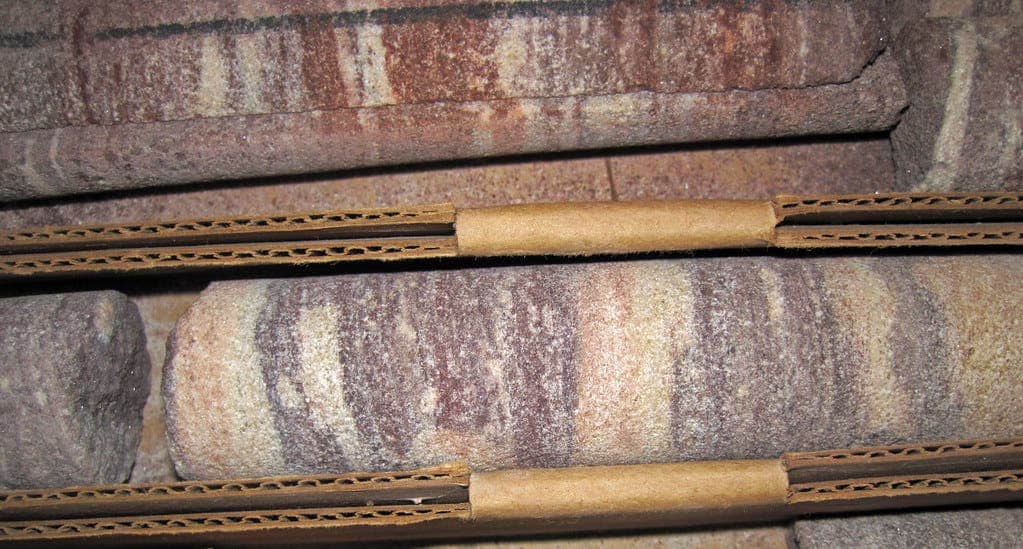Plastic pollution has become one of the most pressing environmental issues, as increasing production of disposable plastic products overwhelms the world’s ability to deal with them. Now, a new study has found that plastics have been building dramatically in the sediment record since 1945.

The research, published in Science Advances Wednesday, looked at a single sediment core that dates back to 1834. However, plastics didn’t really enter the environment until after World War II in 1945 because that’s when its production really ramped up, which became clear in the sediment core analyzed.
The increase in plastics correlates with worldwide plastic production and the population growth along the Southern California coast that feeds the watershed where the team collected this sample. The plastic footprint is so massive that the authors suggest it could serve as a geological proxy in the sedimentary record.
Typically, geologists rely on radioisotopes to flag the beginning and ends of eras. Sometimes, fossils can be used as proxies to assess the age of sedimentary layers. Similarly, the team behind this study thinks plastics can be the marker for when this new type of geological era began. The ocean sediment tells a clear story of the world’s growing reliance on plastic, they argue.
The researchers got their sediment samples from something called a box core, essentially a giant cookie cutter that slices down many years’ worth of layers in the seafloor. Back at the lab, they dried each layer and ran the material through filters to isolate the particles.

According to the study, between 1945 and 2009, the rate of plastic deposition doubled every 15 years on average. Most of the plastics—67.5 percent—found in the post-1945 core are white fibers. Microplastics take a much more significant role in most recent layers of sediments, the experts said.
“We barely found trace amounts of microplastics in layers from the 1940s,” oceanographer Jennifer Brandon, lead author on the new paper, said. “But you can easily see the plastics in the more recent layers. There’s been an exponential increase.”
Not all plastic descends to the seafloor. Much of it floats towards the surface. Scientists helped clarify this point in 2009 when they conducted a landmark study of the Great Pacific Garbage Patch, an immense area of debris roughly 1,000 miles off San Diego.
The concentration of microplastics off the coast of California, where these researchers did their work, might even be relatively low compared to other parts of the world, making it harder to observe their effects on organisms. As coastal populations continue to grow, plastic will continue to pile up in the sea.
“If they were doing the same thing in the Yellow Sea in China, right outside some of the big rivers like the Yangtze and Yellow River, the concentrations would probably be huge and cause adverse effects,” said University of Michigan eco-toxicologist Allen Burton, who studies microplastics.
Today, single-use plastics account for 40 percent of the plastic produced every year. Many of these products, such as plastic bags and food wrappers, have a lifespan of mere minutes to hours, yet they may persist in the environment for hundreds of years. Every year, about 8 million tons of plastic waste escapes into the oceans from coastal nations.
The overall impact of plastics in the environment is one of the several pieces of evidence behind the Anthropocene, Earth’s most recent geologic time period defined as human-influenced, based on the fact that atmospheric, geologic, hydrologic and other earth system processes are now altered by humans.






